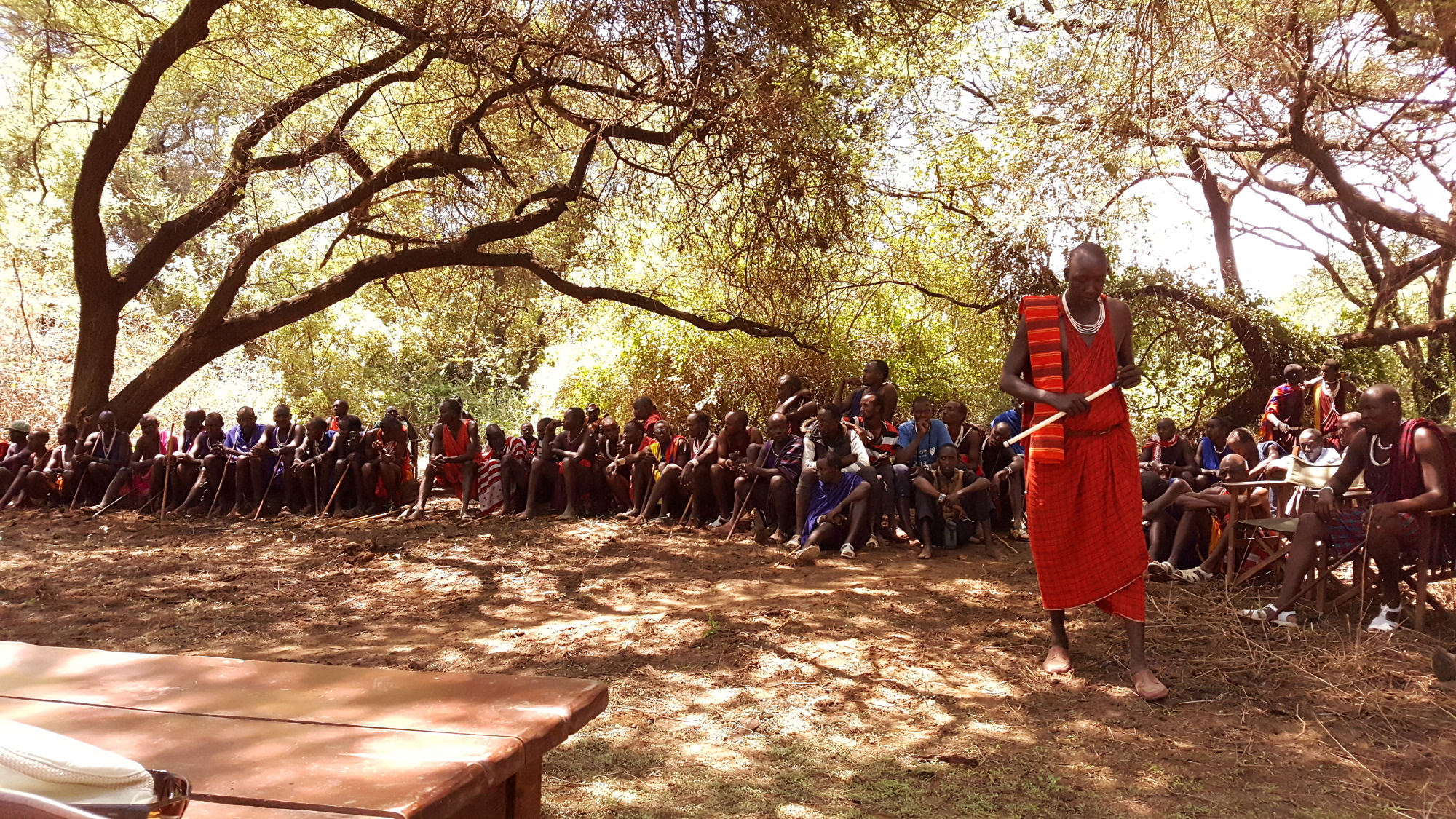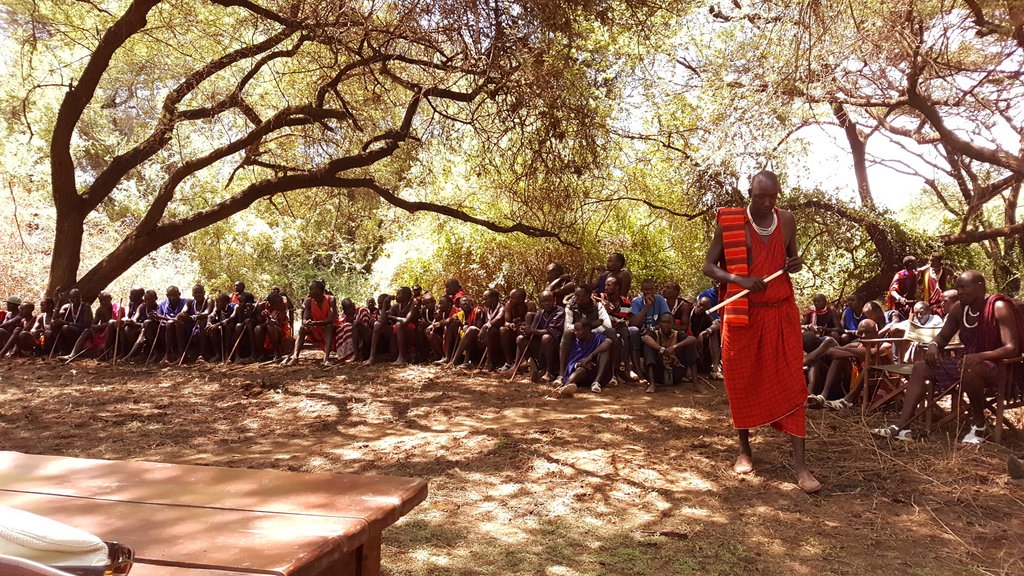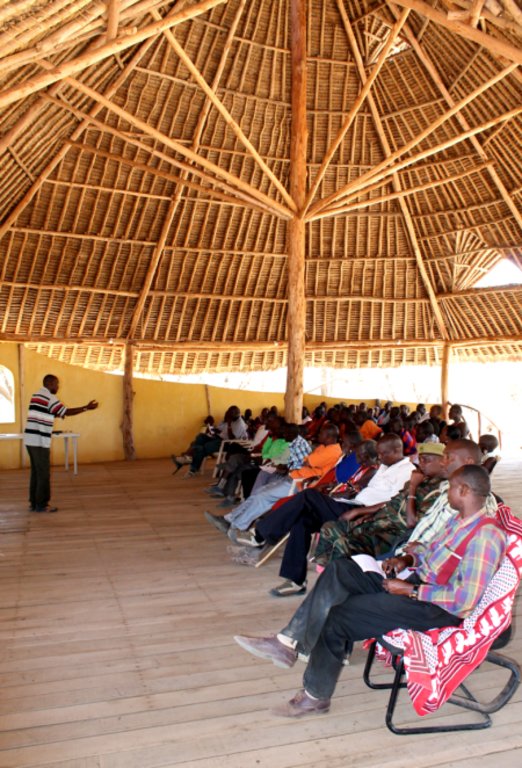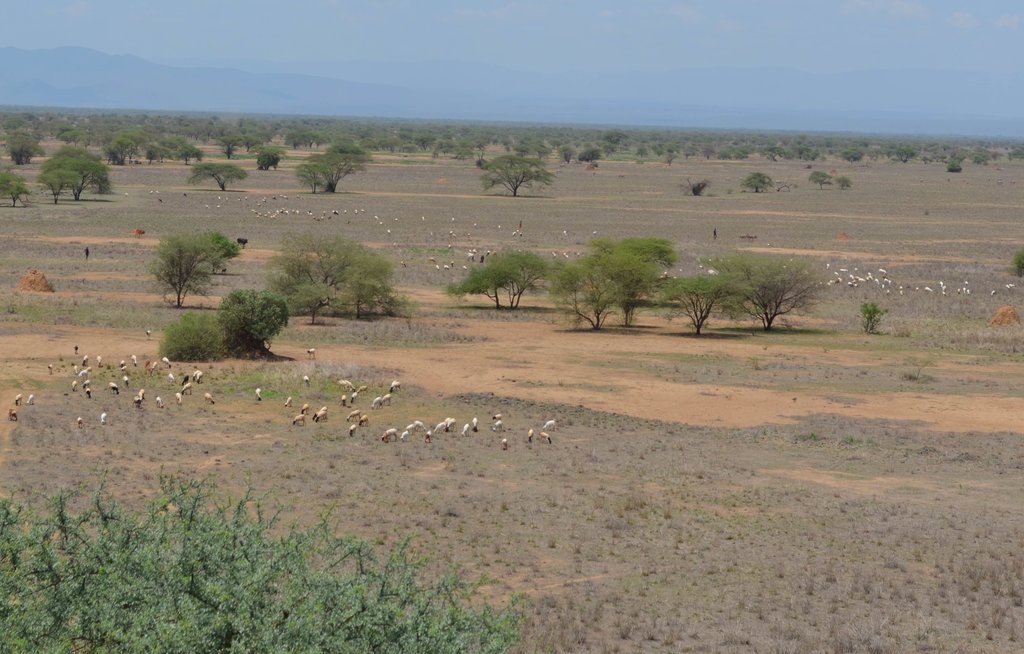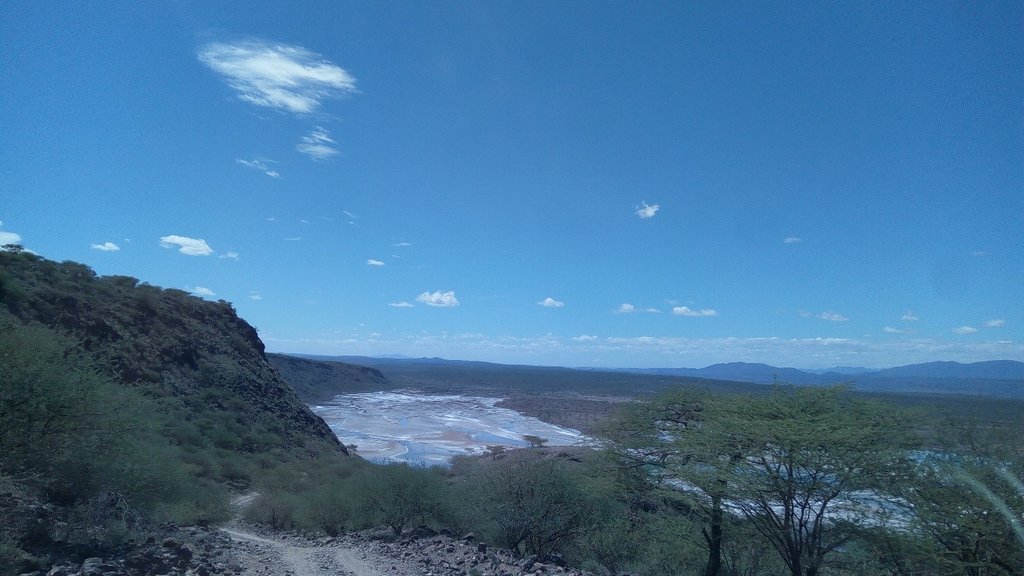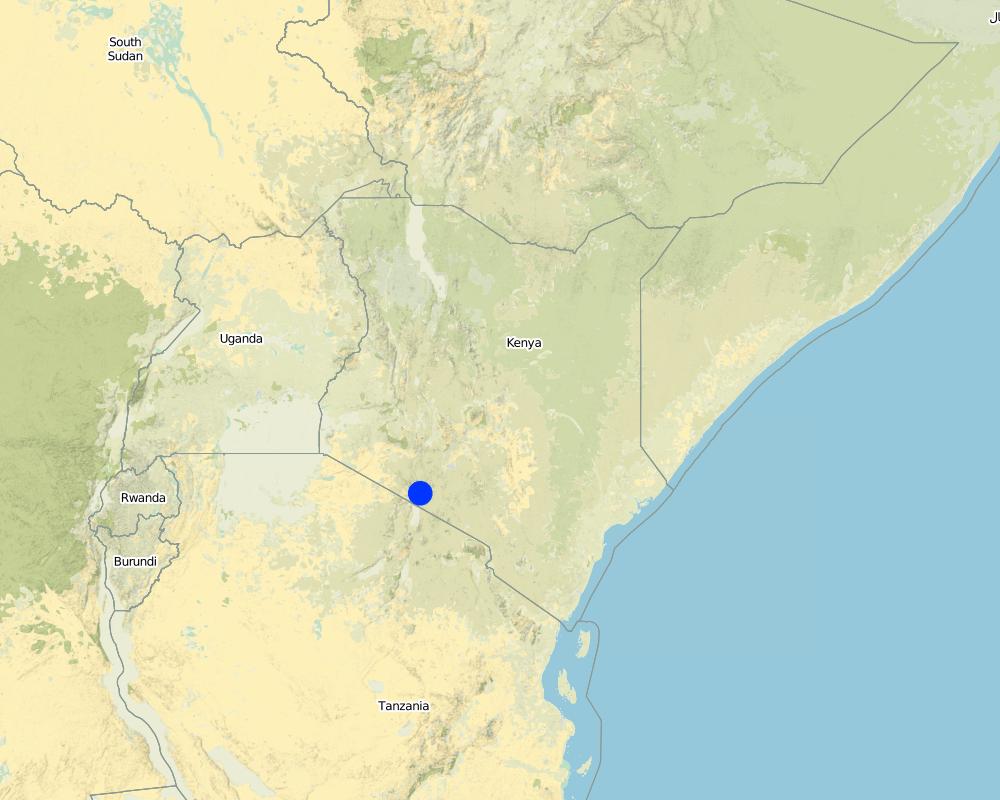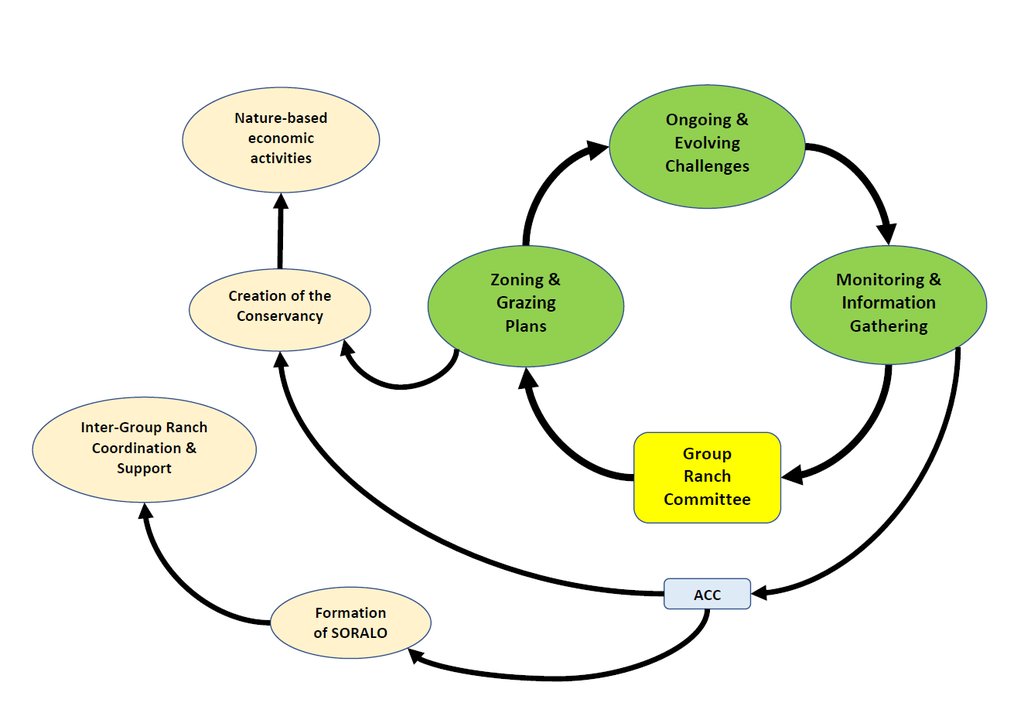Community-based rangeland management in the southern Kenyan rangelands [Kenya]
- Création :
- Mise à jour :
- Compilateur : Lance W. Robinson
- Rédacteurs : Enoch Mobisa, Peter Tyrrell
- Examinateur : Rima Mekdaschi Studer
approaches_3321 - Kenya
- Résumé complet en PDF
- Résumé complet en PDF pour impression
- Résumé complet dans le navigateur
- Résumé complet (non formaté)
- Community-based rangeland management in the southern Kenyan rangelands: 13 mars 2018 (inactive)
- Community-based rangeland management in the southern Kenyan rangelands: 20 avril 2018 (inactive)
- La gestion communautaire des terres de parcours dans le sud du Kenya: 22 juin 2018 (inactive)
- La gestion communautaire des terres de parcours dans le sud du Kenya: 2 novembre 2021 (public)
Voir les sections
Développer tout Réduire tout1. Informations générales
1.2 Coordonnées des personnes-ressources et des institutions impliquées dans l'évaluation et la documentation de l'Approche
Nom du projet qui a facilité la documentation/ l'évaluation de l'Approche (si pertinent)
Restoration of degraded land for food security and poverty reduction in East Africa and the Sahel: taking successes in land restoration to scale (ILRI)Nom du ou des institutions qui ont facilité la documentation/ l'évaluation de l'Approche (si pertinent)
International Livestock Research Institute (ILRI) - Kenya1.3 Conditions relatives à l'utilisation par WOCAT des données documentées
Quand les données ont-elles été compilées (sur le terrain)?
01/10/2017
Le compilateur et la(les) personne(s) ressource(s) acceptent les conditions relatives à l'utilisation par WOCAT des données documentées:
Oui
1.4 Références au(x) questionnaire(s) sur les Technologies de GDT
2. Description de l'Approche de GDT
2.1 Courte description de l'Approche
Olkiramatian Group Ranch strengthened the capacity of its community governance structures and began to engage in more rigorous implementation of seasonal grazing plans. This was based on traditional ecological knowledge and rangeland management practices. The group ranch incorporated conservation, research, and joint rangeland management planning with neighboring communities.
2.2 Description détaillée de l'Approche
Description détaillée de l'Approche:
Prior to implementation of the approach described here, rangeland management was carried out through customary institutions supported by a group ranch committee. However, many challenges hindered effective management of livestock and natural resources. These included:
• Poor financial management
• Lack of accountability from the leaders - and lack of demand for accountability from the members
• Conflicting group and individual interests
• Lack of a written constitution and grazing by-laws to reinforce traditional decision making.
To minimize and overcome some of these weaknesses, the African Conservation Centre (ACC) and Southern Rift Association of Land Owners (SORALO) worked with Olkiramatian and other communities to help them strengthen their planning and governance and to reinvigorate the traditional system of grazing management. Initially, ACC worked with the community’s governance and resource management committees to build local capacity for decision-making and resource management. Institutions previously responsible for resource management, which had existed under traditional systems, had begun to weaken from both internal and external pressures, undermining the long-term sustainability and equity of rangeland management. The group ranch emerged as the key modern institution within this community and needed to be strengthened to support traditional management. To do this several sequential steps were taken:
(i) First, the group ranch committee instituted a more objective way of identifying and electing office holders, to ensure a credible base for resource governance and building consensus among resource users;
(ii) Registration of group ranch members was re-initiated to ensure equal access and rights to resource use, and to provide clarity around membership;
(iii) Institutions responsible for rangeland management, including the group ranch committee, and the conservation and grazing subcommittees, were reinforced primarily through the strengthening of internal capacity;
(iv) ACC facilitated a process for consolidating the group ranch's governance and by-laws to help guide the implementation of the strategy, including enforcement;
(v) The group ranch implemented provisions for holding leaders accountable, allowing the group ranch members to demand their rights;
(vi) Decision-making processes were facilitated by laying down procedures for sharing information and apportioning responsibilities among the leadership - as decided at annual general meetings;
(vii) Rangeland monitoring groups and rangers, mostly local youth, were trained and positioned;
(viii) Finally, the Lale’enok Resource Centre was established, together with community enterprises based on the use of natural resources. A women’s group was included.
An important catalyst in the approach was the establishment of a community conservation area and lodge within the group ranch for the development of wildlife tourism. The conservation area capitalized on the existence of the community’s dry season reserve where wildlife such as zebra and giraffes were abundant , which is only grazed after pasture is utilized elsewhere. This creation of a conservation area, coupled with the desire to generate revenue through tourism with its semi-exclusive access rights to parts of the conservation area, worked to reaffirm the grazing management strategies of preventing settlement within the conservation area and encouraging longer resting of pasture following rain. This happened alongside the development of a research program , which has helped to put community rangeland management on an evidence-based foundation.
With guidance, the community revised its grazing pland zoned its land into four resource use areas, now embodied in the new group ranch constitution:
- Conservation or wildlife areas (which then allowed the creation of the conservancy);
- Agricultural/crop production areas;
- Livestock grazing areas (dry season and wet grazing areas);
- Human settlements.
The grazing sub-committee of the group ranch makes and implements decisions on livestock access to certain areas, with pasture rested between and across seasons. The conservancy is rested from livestock grazing as a “grass bank” during the wet seasons, which can last up to 6 months . Settlement areas are also tightly managed under this approach to preserve pasture heterogeneity and prevent local degradation. Fines are imposed on herders who break grazing regulations. On a rolling basis the communities now utilize traditional ecological knowledge, ecological monitoring and expert knowledge, to reassess these grazing regimes under changing conditions. These rangeland management activities are also nested within joint, inter-community planning such as regular meetings of the grazing committees of clusters of group ranches.
2.3 Photos de l'approche
2.5 Pays/ région/ lieux où l'Approche a été appliquée
Pays:
Kenya
Région/ Etat/ Province:
Kajiado
Autres spécifications du lieu :
Kajiado West Constituency
Map
×2.6 Dates de début et de fin de l'Approche
Indiquez l'année de démarrage:
2004
Commentaires:
The approach is on-going.
2.7 Type d'Approche
- Hybrid traditional/project-based
2.8 Principaux objectifs de l'Approche
To enhance sustainable livelihoods for pastoralist community members through informed, sustainable use of their resources in an equitable manner.
2.9 Conditions favorisant ou entravant la mise en œuvre de la(des) Technologie(s) appliquée(s) sous l'Approche
normes et valeurs sociales/ culturelles/ religieuses
- favorise
Uniform ethnicity. Communal land tenure. The pre-existing customary institutions and the group ranch committees. The government decree on establishment of group ranches. The strong traditional and cultural knowledge about rangeland and livestock management.
- entrave
Cultural beliefs: large numbers of livestock are seen as a status symbol; resulting in potential overstocking of livestock.
disponibilité/ accès aux ressources et services financiers
- entrave
Financial resources are limited for the group ranch committee; they depend on small collections at local markets and some donor financing to enact projects.
cadre institutionnel
- favorise
The group ranch was already established and practicing planned grazing according to customary rules.
cadre juridique (régime foncier, droits d'utilisation des terres et de l'eau)
- favorise
There is a strong body of legislation developing in Kenya to ensure sustainable use of rangeland resources. This includes the new Community Land Act (2016), which creates local governance institutions with protection of grazing; the Wildlife Act (2012), creating community conservation areas and allowing benefits and compensation from wildlife; the Water Act (2016) and the Water Resource Users Association encourage multi-user analysis and cooperation to protect the quantity and quality of water for all users within a catchment.
gouvernance foncière (prise de décisions, mise en œuvre et application des décisions)
- favorise
The group ranch committee is the highest decision-making body. There is a grazing sub-committee which manages the details of seasonal grazing patterns.
connaissances sur la GDT, accès aux supports techniques
- favorise
The community is networked to researchers and technical experts from institutions including ACC, SORALO, Universities and TATA chemicals; through the Lale'enok Resource Centre. Mobile phones and access to internet has enhanced access to technical information. There is a wealth of traditional knowledge within the older generation who understand the requirements for sustainable management of the landscape.
- entrave
Low capacity of the many community members to tap into the existing knowledge bases. Lack of technical capacity to address specific research needs identified by the community.
marchés (pour acheter les intrants, vendre les produits) et prix
- favorise
Livestock markets within reach of the community members - the Shompole crossborder livestock market is in the neighboring conservancy.
- entrave
Low livestock prices at the grass roots presents a challenge to growth of the livestock value chain.
charge de travail, disponibilité de la main-d'œuvre
- favorise
The community members are involved in the process as part of their lifestyle. Planned grazing made it easier for them to take of their livestock and reduce the number of people required to herd their livestock.
3. Participation et rôles des parties prenantes impliquées dans l'Approche
3.1 Parties prenantes impliquées dans l'Approche et rôles
- exploitants locaux des terres / communautés locales
Members and executives of the group ranch committee.
Individual members of the group ranch, as rangeland users and through their grazing patterns according to the ranch's grazing plans, contribute to management.
- organisations communautaires
Olkiramatian Group Ranch.
The group ranch, through its democratic structures, has the ultimate responsibility for decision-making for the group ranch, including rangeland management and grazing planning, partnerships, fund raising and financial management, etc.
- Spécialistes de la GDT/ conseillers agricoles
Personnel of SORALO and ACC.
Provision of technical advice and support.
- chercheurs
Students.
Students, hosted by SORALO and ACC, carry out research on conservation, ecotourism, land use, rangeland condition, etc.
- ONG
SORALO and ACC.
Research guidance, and connection with other government, NGO and donor agency stakeholders. Also provision of technical advice and support (see SLM Specialists/Agricultural Advisers, above).
Si plusieurs parties prenantes sont impliquées, indiquez l'organisme chef de file ou l'institution responsable:
Olkiramatian Group Ranch
3.2 Participation des exploitants locaux des terres/ communautés locales aux différentes phases de l'Approche
| Participation des exploitants locaux des terres/ communautés locales | Spécifiez qui était impliqué et décrivez les activités | |
|---|---|---|
| initiation/ motivation | auto-mobilisation | The community invited ACC to come and support conservation work and improve ecotourism. A visiting researcher from ACC identified opportunities for reinvigorating the group ranch structure and nature-based enterprises. The work of the researcher contributed to the approach, but the ultimate push came from the community. |
| planification | auto-mobilisation | The community evolved into an organized group and was determined to employ good resource practices to improve the rangelands and the lives of the people. They sought the help of ACC in strengthening their capacity to fundraise and improve community enterprises. SORALO was established to continue supporting the community in networking and supporting the conservation work. |
| mise en œuvre | interactive | The committee members, the individual members implement the approach. SORALO and to a less extent ACC, play advisory roles. The community members provide labour and time as their in-kind contribution. ACC help the community raise funds for the implementation. |
| suivi/ évaluation | interactive | With guidance from SORALO, monitoring is done by community members. The various committees have a monitoring component in their work. |
| Research | interactive | At the beginning, research was done by a scientist from ACC. Later on in the approach, the community youth have been trained and are actively involved in research activities. |
3.3 Diagramme/ organigramme (si disponible)
Description:
Adaptation to evolving challenges through the community's governance structure -- the group ranch committee -- is at the centre of the approach.
Auteur:
Enoch Ontiri and Lance Robinson
3.4 Prises de décision pour la sélection de la Technologie/ des Technologies
Indiquez qui a décidé de la sélection de la Technologie/ des Technologies à mettre en œuvre:
- principalement les exploitants des terres soutenus par des spécialistes de la GDT
Expliquez:
The group ranch members are the collective owners and, through the Group Ranch Committee, managers of the land. They receive support and guidance from organizations such as the African Conservation Centre (ACC) and Southern Rift Association of Land Owners (SORALO) on techniques and practices to apply, but are themselves the primary decision-makers.
- Research and evidence-based decision-making played some role, but planning of technical practices to be implemented was primarily based on traditional knowledge
4. Soutien technique, renforcement des capacités et gestion des connaissances
4.1 Renforcement des capacités/ formation
Une formation a-t-elle été dispensée aux exploitants des terres/ autres parties prenantes?
Oui
Spécifiez qui a été formé:
- exploitants des terres
Si pertinent, spécifiez le genre, l'âge, le statut, l'ethnie, etc.
Training was carried out primarily for group ranch committee members and other community leaders/elders, predominantly males. Training has also been done for the RETO Women's Group.
Formats de la formation:
- Training workshops
Thèmes abordés:
The training to the women’s group was on improved bead-making and business management in order to exploit the tourism market.
Selected youth were trained as wildlife rangers and others as rangeland monitors. Species-specific teams were trained in tracking particular species such as lions.
4.2 Service de conseils
Les exploitants des terres ont-ils accès à un service de conseils?
Oui
Spécifiez si le service de conseils est fourni:
- dans les champs des exploitants?
- dans des centres permanents
Décrivez/ commentez:
Advisory services provided by SORALO and ACC. A permanent resource centre, Lale'enok is present in the region.
4.3 Renforcement des institutions (développement organisationnel)
Des institutions ont elles été mises en place ou renforcées par le biais de l'Approche?
- oui, modérément
Spécifiez à quel(s) niveau(x), ces institutions ont été renforcées ou mises en place:
- local
Décrivez l'institution, ses rôles et responsabilités, ses membres, etc.
The organizations African Conservation Centre (ACC) and Southern Rift Association of Land Owners (SORALO) have helped to strengthen the group ranch structures
Précisez le type de soutien:
- financier
- renforcement des capacités/ formation
Donnez plus de détails:
Primarily support has been through capacity building and training with the group ranch committee and other committees.
Additional support has been provided by SORALO through the provision of staff and labor for hosting community meetings; writing the constitution; producing maps and other information; conducting research into pertinent management issues.
ACC with funding from various sources helped to finance establishment of the conservation area and a lodge. The lodge pays a lease fee to the group ranch. Guests at the lodge pay a bed night fee which is paid to the group ranch committee and a conservation fee which goes to the conservation committee. The conservation fee pays for scouts and also finances conservation-related development such as fences, water pipelines, and other community projects.
4.4 Suivi et évaluation
Le suivi et l'évaluation font ils partie de l'Approche? :
Oui
Commentaires:
The community, especially youth, are involved in assessing the ecological status of the rangeland. There are ecological monitoring units which take censuses of flora and fauna. Community activity reports are written regularly. The major economic activity of livestock trade is monitored by a data collection team that visits the major livestock markets.
Si oui, ce document est-il destiné à être utilisé pour le suivi et l'évaluation?
Oui
4.5 Recherche
La recherche a-t-elle fait partie intégrante de l’Approche?
Oui
Spécifiez les thèmes:
- écologie
Donnez plus de détails et indiquez qui a mené ces recherches:
Research questions are often answered by visiting students and local scientists at the Lale'enok Resource Centre. These questions cover a diverse range of issues related to the socioeconomic and ecological factors affecting local livelihoods.
African Conservation Centre. Southern Rift Association of Land Owners. Graduate students hosted by these organizations.
5. Financement et soutien matériel externe
5.1 Budget annuel de la composante GDT de l'Approche
Si le budget annuel précis n'est pas connu, indiquez une fourchette:
- < 2 000
Commentez (par ex. principales sources de financement/ principaux bailleurs de fonds):
The primary resource used for implementation of the approach is the time of community members. Inputs from supporting organizations ACC and SORALO, while relevant, have been secondary to the approach and hence are not included in the budget here.
5.2 Soutiens financiers/ matériels fournis aux exploitants des terres
Les exploitants des terres ont-ils reçu un soutien financier/ matériel pour la mise en œuvre de la Technologie/ des Technologies?
Non
5.3 Subventions pour des intrants spécifiques (incluant la main d'œuvre)
- aucun
Si la main d'œuvre fournie par les exploitants des terres était un intrant substantiel, elle était:
- volontaire
Commentaires:
Implementing the approach is just a lifestyle for the community members.
5.4 Crédits
Des crédits ont-ils été alloués à travers l'Approche pour les activités de GDT?
Non
5.5 Autres incitations ou instruments
D'autres incitations ou instruments ont-ils été utilisés pour promouvoir la mise en œuvre des Technologies de GDT?
Oui
Si oui, spécifiez:
Ecotourism revenue provides some incentive to carry out and continue with rangeland management activities.
6. Analyses d'impact et conclusions
6.1 Impacts de l'Approche
Est-ce que l'Approche a autonomisé les exploitants locaux des terres, amélioré la participation des parties prenantes?
- Non
- Oui, un peu
- Oui, modérément
- Oui, beaucoup
As the approach was community-driven with decisions and actions fully in the hands of Olkiramatian members, this has bolstered them to carry on. In the early days, one of the support organizations--ACC--helped ensure more transparent decision-making and selection of leaders, and stronger accountability to group ranch members.
Est-ce que l'Approche a permis la prise de décisions fondées sur des données probantes?
- Non
- Oui, un peu
- Oui, modérément
- Oui, beaucoup
Ecological monitoring and research are prominent aspects of the interventions and community-decision-making.
Est-ce que l'Approche a aidé les exploitants des terres à mettre en œuvre et entretenir les Technologies de GDT?
- Non
- Oui, un peu
- Oui, modérément
- Oui, beaucoup
It facilitated the implementation of seasonal planned grazing.
Est-ce que l'Approche a amélioré la coordination et la mise en œuvre de la GDT selon un bon rapport coût-efficacité?
- Non
- Oui, un peu
- Oui, modérément
- Oui, beaucoup
Coordination with neighbouring group ranches has been a key aspect of the interventions.
Est-ce que l'Approche a amélioré les connaissances et les capacités des exploitants des terres pour mettre en œuvre la GDT?
- Non
- Oui, un peu
- Oui, modérément
- Oui, beaucoup
Improved knowledge of rangeland and wildlife ecology.
Est-ce que l'Approche a atténué les conflits?
- Non
- Oui, un peu
- Oui, modérément
- Oui, beaucoup
Involvement of customary institutions has contributed to mitigation and resolution of conflicts.
Est-ce que l'Approche a amélioré les questions foncières et des droits d'utilisation qui entravent la mise en œuvre des Technologies?
- Non
- Oui, un peu
- Oui, modérément
- Oui, beaucoup
In theory, tenure rights were already secure. However the weakness of the community institution--the group ranch--could have resulted in land fragmentation or alienation as it had done so in many other group ranches. Strengthening the group ranch's governance has strengthened tenure security.
6.2 Principale motivation des exploitants des terres pour mettre en œuvre la GDT
- augmenter la production
The rangelands have increased pastures for livestock. Wildlife numbers in the rangeland increased. Ecotourism enterprises improved in the area.
- augmenter la rentabilité/ bénéfice, rapport coûts-bénéfices
- réduire la dégradation des terres
Splash erosion was reduced. Some areas that were bare started having regeneration of grass.
- règles et règlements (amendes)/ application
The rules and by-laws were revised and strategies for enforcement were improved. The group ranch, conservation and rangeland monitoring committees were strengthened.
- conscience environnementale
Community members are more aware of the role of wildlife and ecosystem on their lives. New women groups, the youth and other community members involved in research projects has improved their awareness.
- améliorer les connaissances et compétences en GDT
The community is constantly involved in project work. Skills in ecological monitoring, ecotourism enterprises, rangeland monitoring, lion tracking all help the community members acquire skills.
- atténuer les conflits
The program has enhanced cohesion and more integration of community members. The committees are an avenue for mitigating any disputes and resolving conflict in the community.
6.3 Durabilité des activités de l'Approche
Les exploitants des terres peuvent-ils poursuivre ce qui a été mis en œuvre par le biais de l'Approche (sans soutien extérieur)?
- oui
Si oui, décrivez de quelle manière:
The approach is based on ensuring strong, community-led governance. This has been achieved and is likely to be sustained.
6.4 Points forts/ avantages de l'Approche
| Points forts/ avantages/ possibilités du point de vue de l'exploitant des terres |
|---|
| The approaches emanates from a strong community with a working customary rangeland management structure. Communal ownership of land and the community's sense of belonging and customary (tribal) right of access and use of natural resources all make it easier for the approach to be successful. |
| Points forts/ avantages/ possibilités du point de vue du compilateur ou d'une autre personne ressource clé |
|---|
| The approach is a bottom-up one that builds on traditional resource management practices, adapting them to evolving social, economic and biophysical conditions. This contributes to strong sense of community ownership. |
| As a community driven and implemented approach, the cost is minimal. With incorporation of the conservation/wildlife tourism component a secondary source of income for the community structures and some individuals in the community is realized. |
| The climatic conditions that allow extensive livestock production and wildlife is also another advantage for the approach. The landscape lies between Nguruman escarpment on one side, Lake Magadi on the north western part and the Amboseli/Mt. Kilimanjaro on the southern part. These contribute to some degree of isolation and protection of influxes of herders from other locations. |
| The demonstrated success of the grazing management practices put in place has led to changed decisions and management practices reinforcing the community's willingness to continue with the system. |
6.5 Faiblesses/ inconvénients de l'Approche et moyens de les surmonter
| Faiblesses/ inconvénients/ risques du point de vue de l’exploitant des terres | Comment peuvent-ils être surmontés? |
|---|---|
| There is concern among some community members about the incorporation of conservation activities potentially leading to restrictions on mobility and access to pastures. | Continued awareness raising about the benefits and pre-empting misunderstandings about the conservation activities. |
| The community success in rangeland management is sometimes viewed as a source of failure. This is because the community holds some customary beliefs and norms that allow for practices like reciprocal grazing by other pastoralists on their land. In the case that Olkiramatian is the best quality grass bank during extended droughts, livestock from other communities flock there and mostly cause overgrazing, degradation and social conflict. | The idea of SORALO networking all the land owners in the southern rangelands and are helping them establish similar approaches means the whole rangeland in the southern Kenya will become a continuous, homogenously managed landscape. |
| Faiblesses/ inconvénients/ risques du point de vue du compilateur ou d'une autre personne ressource clé | Comment peuvent-ils être surmontés? |
|---|---|
| The capacity of the group ranch committee to raise and attract appropriate human and financial resources is low. | Continued training on effective governance and help in putting in place working systems. |
| The stocking rates of livestock per household are not corresponding to the holding capacity of the rangeland. | Continued action research and training of the locals on the need to reduce livestock numbers. |
7. Références et liens
7.1 Méthodes/ sources d'information
- interviews/entretiens avec les exploitants des terres
12 focus group discussions.
- interviews/ entretiens avec les spécialistes/ experts de GDT
9 key informant interviews.
- compilation à partir de rapports et d'autres documents existants
peer reviewed journal papers. project reports.
7.2 Références des publications disponibles
Titre, auteur, année, ISBN:
Community-based Rangeland Management in Shompole and Olkiramatian Group Ranches. Ontiri, Enoch M. and Lance W. Robinson. 2018.
Disponible à partir d'où? Coût?
cgspace.cgiar.org -- open access
7.3 Liens vers les informations pertinentes disponibles en ligne
Titre/ description:
Seasonal movements of wildlife and livestock in a heterogenous pastoral landscape: Implications for coexistence and community based conservation
URL:
https://www.sciencedirect.com/science/article/pii/S2351989417301075
Titre/ description:
Lale'enok Resource centre
URL:
https://laleenok.wordpress.com/history/
Liens et modules
Développer tout Réduire toutLiens
Aucun lien
Modules
Aucun module trouvé


